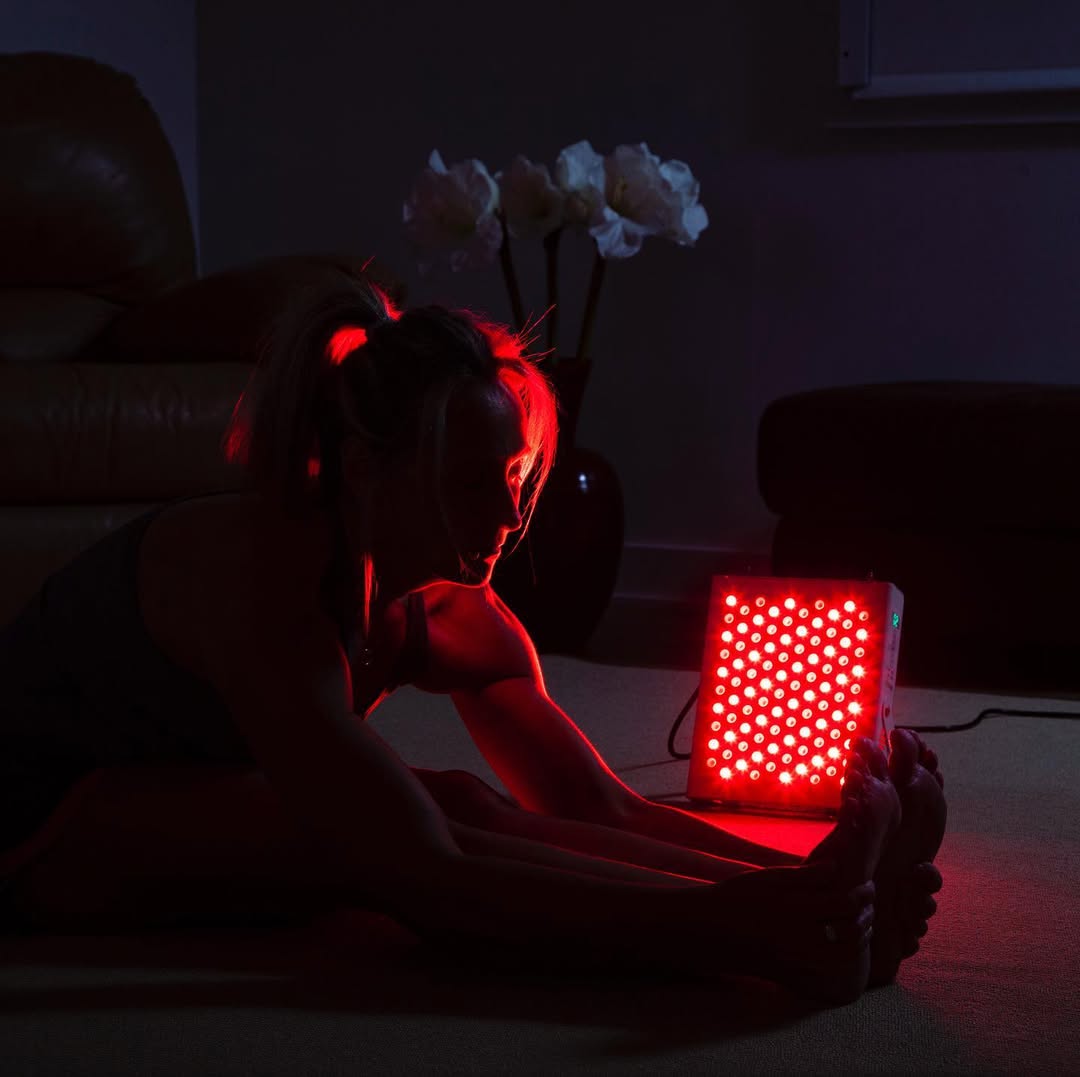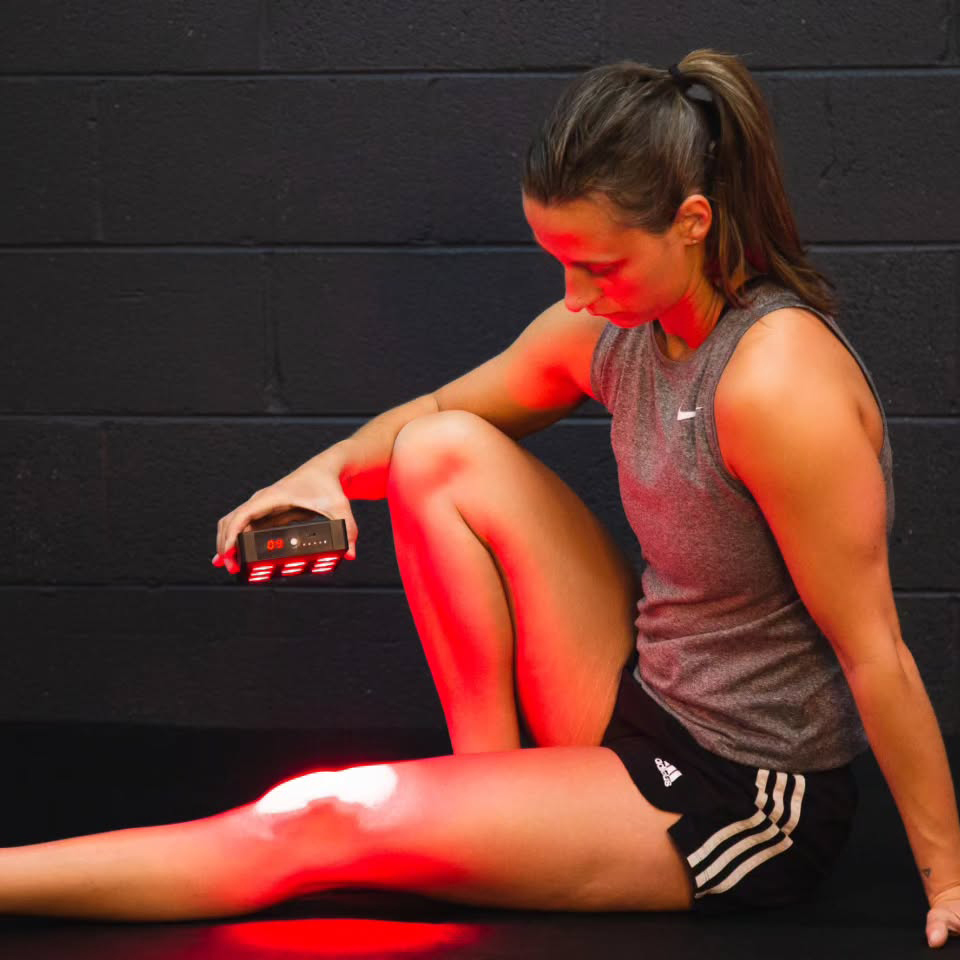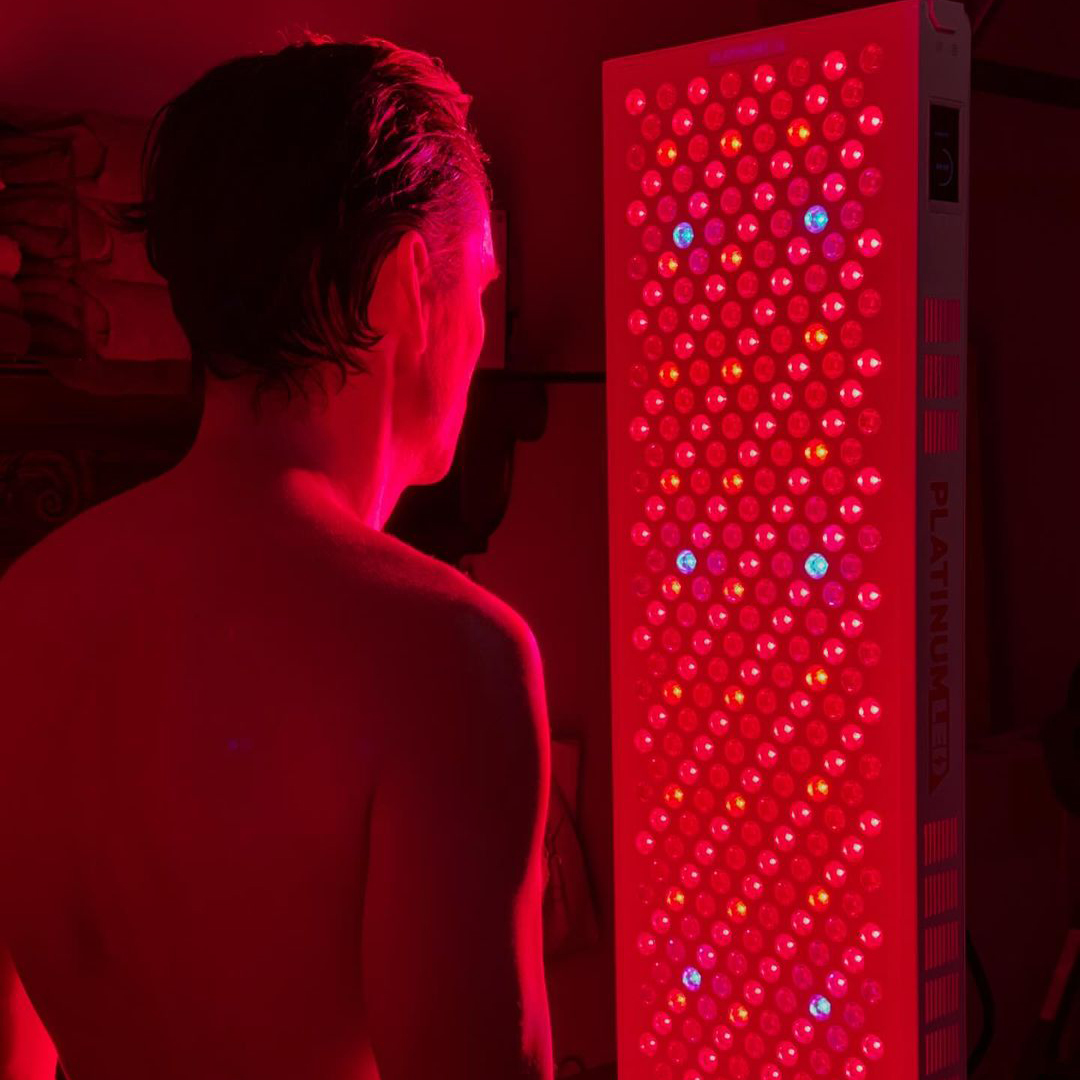![]() Free Shipping
Free Shipping ![]() Buy Now, Pay Later
Buy Now, Pay Later ![]() Eligible
Eligible
Red Light Therapy for Fibromyalgia: Relieving Symptoms and Improving Quality of Life

Fibromyalgia is a chronic pain disorder that affects millions of people worldwide, causing widespread musculoskeletal pain, fatigue, sleep disturbances, and cognitive difficulties—often referred to as “fibro fog.” For those living with this condition, finding effective treatments can be a frustrating journey. While medications, physical therapy, and lifestyle changes can help, many patients continue to search for alternative therapies that offer relief without harsh side effects.
One promising option gaining attention is red light therapy (RLT), also known as low-level laser therapy (LLLT) or photobiomodulation. This non-invasive treatment uses specific wavelengths of red and near-infrared light to penetrate the skin, stimulating cellular repair, reducing inflammation, and alleviating pain. But can it really help fibromyalgia patients? Let’s explore the science, benefits, and real-life experiences behind red light therapy for fibromyalgia.
Understanding Fibromyalgia: Why Pain Persists
Before diving into red light therapy, it’s essential to understand why fibromyalgia is so challenging to treat. Unlike arthritis or other inflammatory conditions, fibromyalgia doesn’t cause visible tissue damage. Instead, researchers believe it involves central sensitization—a heightened pain response in the brain and nervous system.
Common symptoms include:
- Chronic widespread pain (often described as a deep ache or burning sensation)
- Fatigue (even after a full night’s sleep)
- Sleep disturbances (insomnia, restless legs, or non-restorative sleep)
- Cognitive dysfunction (trouble concentrating, memory lapses)
- Stiffness (especially in the morning)
- Mood disorders (anxiety and depression are common)
Traditional treatments like antidepressants, pain relievers, and anticonvulsants may help but often come with side effects. This has led many to explore natural and alternative therapies, including red light therapy.
VELLGUS Elite V2
THE #1 RATED RED LIGHT DEVICE
VELLGUS pro V2
THE #1 RATED FULL BODY RED LIGHT DEVICE
How Red Light Therapy Works
Red light therapy involves exposing the body to low-wavelength red (630-700 nm) and near-infrared (700-1100 nm) light. Unlike UV rays, these wavelengths don’t damage the skin—instead, they penetrate tissue and interact with mitochondria (the energy powerhouses of cells).
Key Mechanisms of Red Light Therapy for Fibromyalgia:
- Boosts Cellular Energy (ATP Production)
- Light absorption by mitochondria enhances adenosine triphosphate (ATP) production, improving cell function and repair.
- Fibromyalgia patients often have mitochondrial dysfunction, which may contribute to fatigue and muscle pain.
- Reduces Inflammation
- RLT decreases pro-inflammatory cytokines (like TNF-α and IL-6) while increasing anti-inflammatory markers.
- Chronic inflammation is believed to play a role in fibromyalgia pain.
- Improves Blood Flow and Tissue Repair
- Enhances microcirculation, helping deliver more oxygen and nutrients to muscles and nerves.
- Promotes collagen synthesis, aiding in tissue healing.
- Modulates Pain Signals
- May help reset overactive pain pathways in the nervous system.
- Some studies suggest it increases endorphin release, providing natural pain relief.
Scientific Evidence: Does Red Light Therapy Help Fibromyalgia?
While research on RLT for fibromyalgia is still emerging, several studies show promising results:
- A 2017 Study (Journal of Lasers in Medical Sciences) found that fibromyalgia patients treated with near-infrared light therapy experienced significant reductions in pain, fatigue, and depression compared to a placebo group.
- A 2009 Randomized Controlled Trial (Pain Medicine) reported that LLLT reduced pain by 35-45% in fibromyalgia patients after just 2 weeks of treatment.
- A 2020 Review (Journal of Clinical Medicine) concluded that photobiomodulation could be a safe and effective adjunct therapy for chronic pain conditions, including fibromyalgia.
Patient Experiences: What Do Fibromyalgia Sufferers Say?
Beyond clinical studies, many fibromyalgia patients report noticeable improvements after using red light therapy:
- “I felt a reduction in deep muscle pain within a few weeks.”
- “My morning stiffness improved, and I could move more freely.”
- “I sleep better and have more energy throughout the day.”
- “It’s one of the few treatments that doesn’t cause side effects.”
Of course, results vary—some people experience dramatic relief, while others see only modest benefits. But given its non-invasive nature and lack of side effects, many find it worth trying.
How to Use Red Light Therapy for Fibromyalgia
If you’re considering RLT, here’s how to get started:
1. Professional vs. At-Home Devices
- In-Clinic Treatments: Physical therapists, chiropractors, and wellness centers often offer higher-powered RLT sessions.
- At-Home Devices: Portable LED panels, handheld devices, or full-body mats allow for daily use at a lower cost.
2. Recommended Protocol
- Wavelength: Look for devices with 660 nm (red) and 850 nm (near-infrared) for deeper penetration.
- Duration: Start with 5-10 minutes per area, 3-5 times per week.
- Consistency: Benefits often build over 4-8 weeks of regular use.
3. Combining with Other Therapies
For best results, pair RLT with:
- Gentle exercise (yoga, swimming, walking)
- Anti-inflammatory diet (rich in omega-3s, antioxidants)
- Stress management (meditation, deep breathing)
Potential Side Effects and Safety
Red light therapy is generally safe, with minimal risks:
- Mild warmth or tingling during treatment (normal).
- Eye protection is recommended with high-intensity devices.
- Rare overuse may cause temporary redness or irritation.
Unlike medications, RLT doesn’t lead to dependency or systemic side effects, making it a low-risk option for long-term pain management.
Final Thoughts: Is Red Light Therapy Worth Trying?
Fibromyalgia is a complex condition, and no single treatment works for everyone. However, red light therapy offers a drug-free, non-invasive approach that may help reduce pain, improve sleep, and enhance energy levels. While more research is needed, current evidence and patient testimonials suggest it’s a valuable tool in managing fibromyalgia symptoms.
If you’ve struggled with medications or other therapies, RLT could be a gentle yet effective alternative worth exploring. As always, consult your healthcare provider before starting any new treatment—especially if you have photosensitivity or certain medical conditions.
Have you tried red light therapy for fibromyalgia? Share your experiences in the comments—your story could inspire others on their healing journey!









